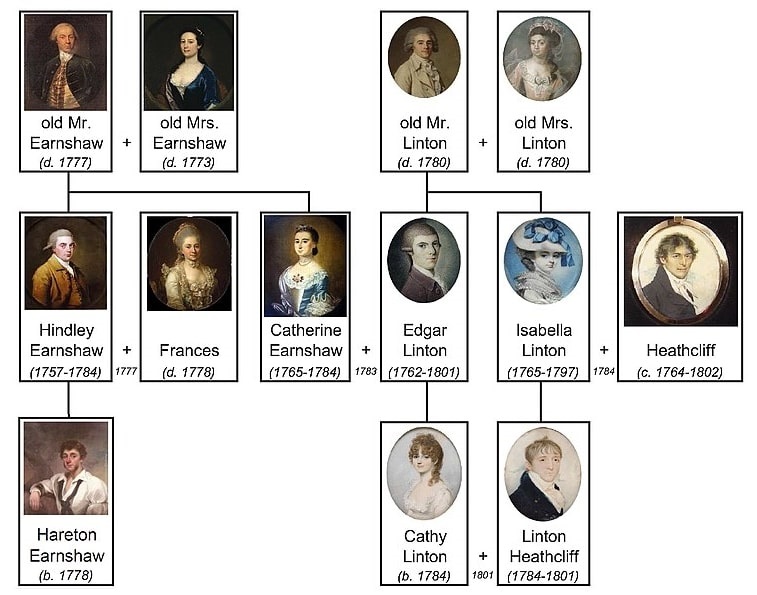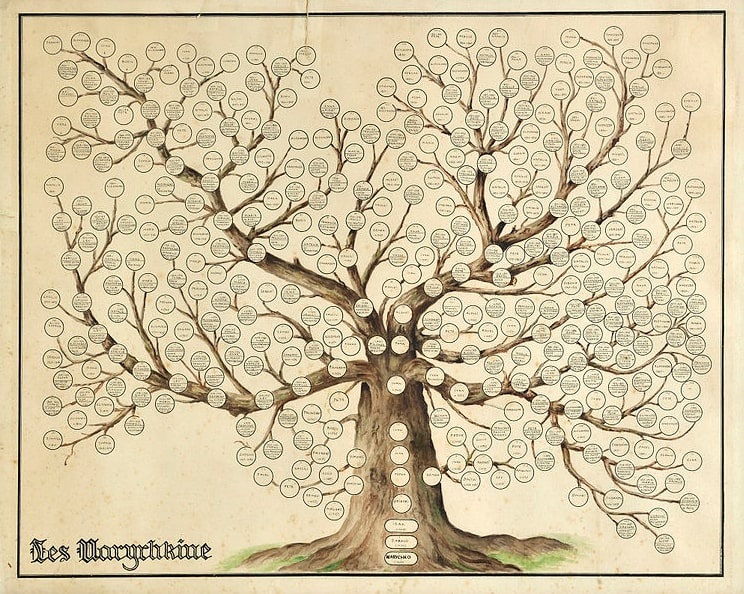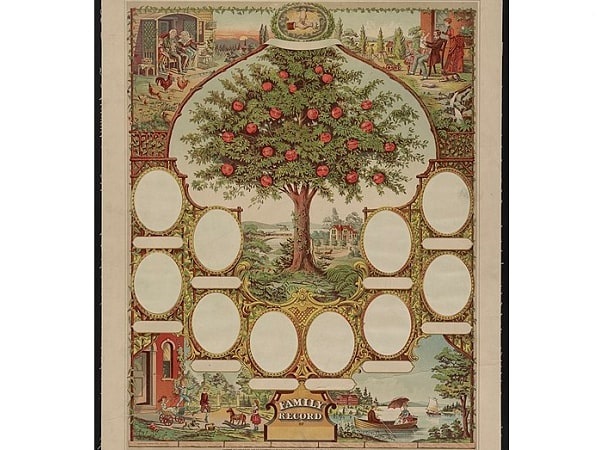Introduction: In this article, Jessica Edwards discusses the two main choices genealogists face when creating and filling in their family tree. Jessica has had a lifelong interest in her family’s history – especially on her father’s side, which goes back to the first settlers in Pennsylvania, Jamestown and New England – and has documented and added more than 21,000 people to her family tree!
When I started working on my family tree, I did as instructed: start with yourself and work your way back. I don’t remember exactly when I started thinking about whether I should stay with my “direct line” (following only those who were related by blood), or should I “broaden my tree” (adding in the families of those who married into my family) – but at some point, I had to decide, and so I pondered the pluses and minuses of each.
Direct Line Family Tree

If I stayed with my direct line, I could focus intently on finding as much information as possible on relatively few family members. My mother’s father came from Czechoslovakia in 1916 and her mother’s parents came from Poland/Hungary in the late 1800s, so documentation on those who preceded them was impossible to find when I started. However, my father’s family were among the first settlers of Pennsylvania and Virginia – and well researched and documented already – so that work might only be trying to find anything that had so far evaded prior searchers, and then following those who came after arriving on my mother’s side.
Broad Family Tree

If I “broadened my tree” I would be following those who married into my family, the others who made up their family, and then those who both married into their family and who came from each union, and so on (a genealogical tsunami). I would not be able to study anyone in depth because, no matter how many I entered, I would always be learning of new people to add to each person’s branch of the tree… and then discovering more documents which might lead me to more hints and people.
When I discussed this with many veteran genealogists, they each said they had faced the same quandary and ultimately had to decide for themselves (the rate for both sides were about 50-50), so this was no answer for me.
I Started Direct, Then Changed to a Broad Family Tree
For a while I tried not including parents’ and siblings’ names and information of extended family members when discovering them in censuses and other documents, but I always felt like I was robbing myself of family – so I finally gave in and started adding everyone. In doing so, I have also discovered thousands of new family members.
In adding them, I have found several instances of cousins marrying third or fourth cousins unknowingly. One cousin through my father’s side told me she wished she had known of the relationship before she married, as she would have chosen not to marry a third cousin – thus saving her years of angst and ultimately divorce!
My worries of a genealogical tsunami if I broadened my family tree did happen, as my tree currently has 21,404 connected individuals and I face an ever-increasing number of hints to go through (114,895 total hints and rising) every day. Sometimes I’ve gotten so frustrated in the ever-increasing number that I will quickly go through them and “ignore” hints that have no way to “prove it belongs to” the person it is attached to.
For example, I ignore other people’s trees unless I cannot find the information any other way, and then I only use their tree as a hint to search for that specific thing (such as a woman’s maiden name), or unsubstantiated information (like copies of articles that contain no citation as to where they found it), or if the person lived during a certain period but has a similar name to someone else that lived in another period or place (like someone who lived from 1920 to 1980 getting a hint for someone who fought in the Civil War), in order to lower the number of hints and feel like I’m accomplishing something.
I once did this over a three-day period and eliminated 100 PAGES of hints! Good news is that I will have my own version of a “Never Ending Story.” Bad news is that my frustrations grow every day that I can’t “give it my all.”
Please consider the pros and cons to each method of pursuing your family tree before beginning. If you change your mind (like I did, starting with a direct tree and then broadening it) you are also burdened with the decision as to whether to try to go back and add those you ignored (and figure out who it was, which may add to your frustrations) – or if you just start from this point on.
Happy Hunting!
Related Articles:
